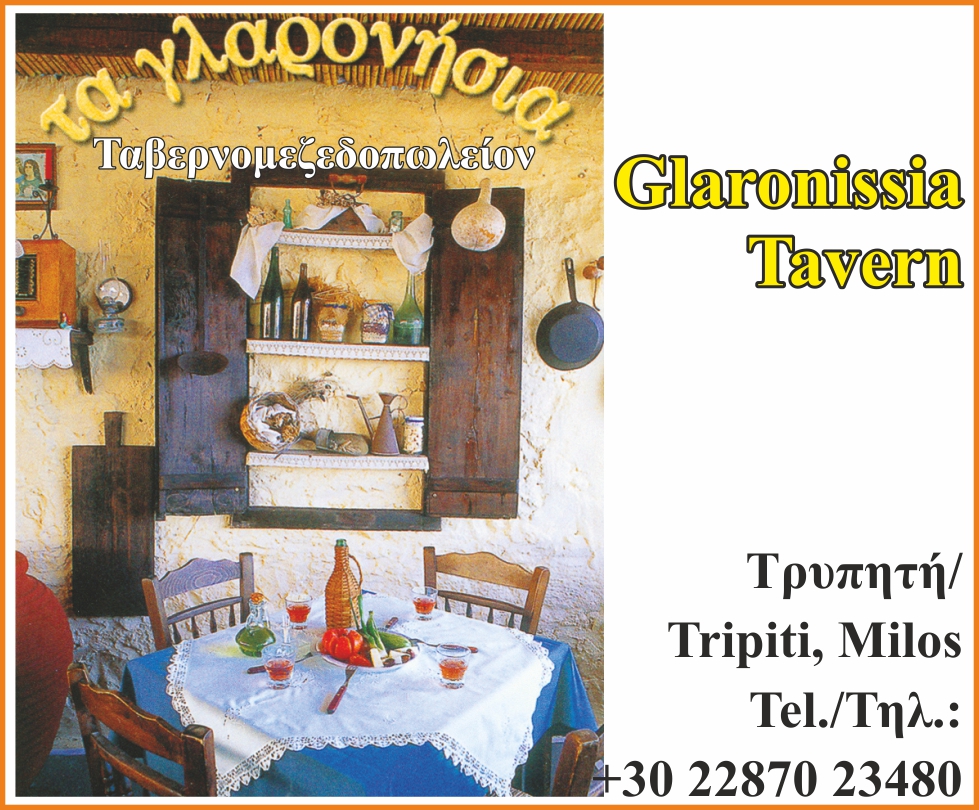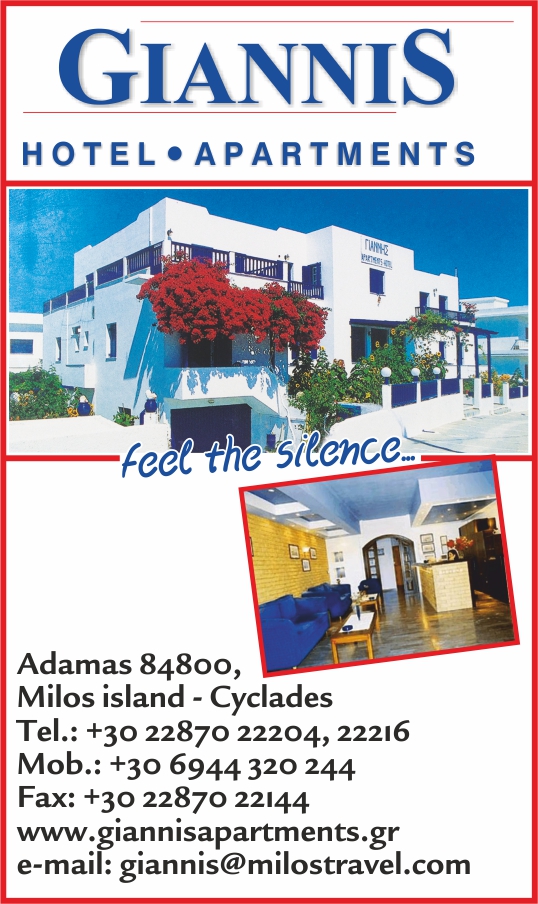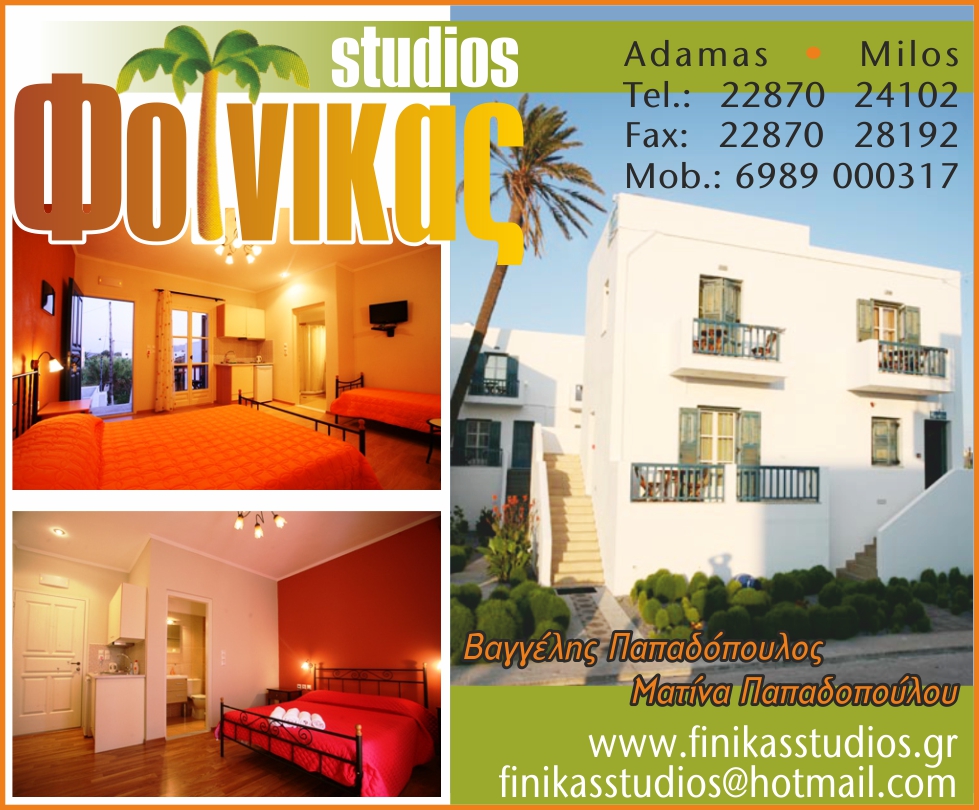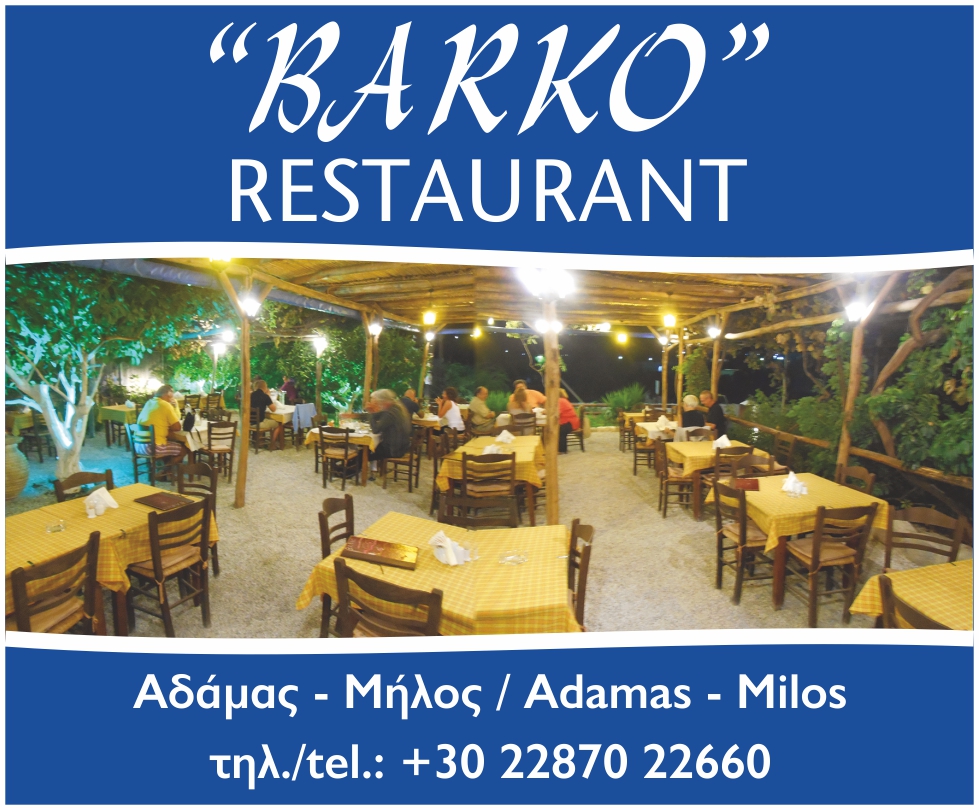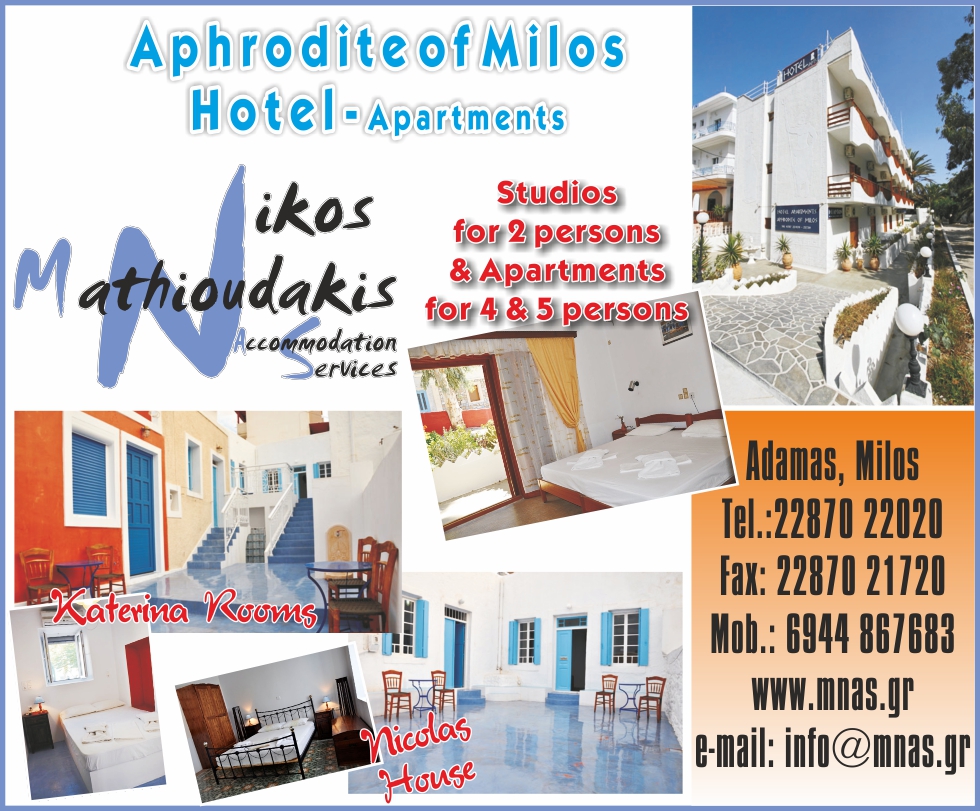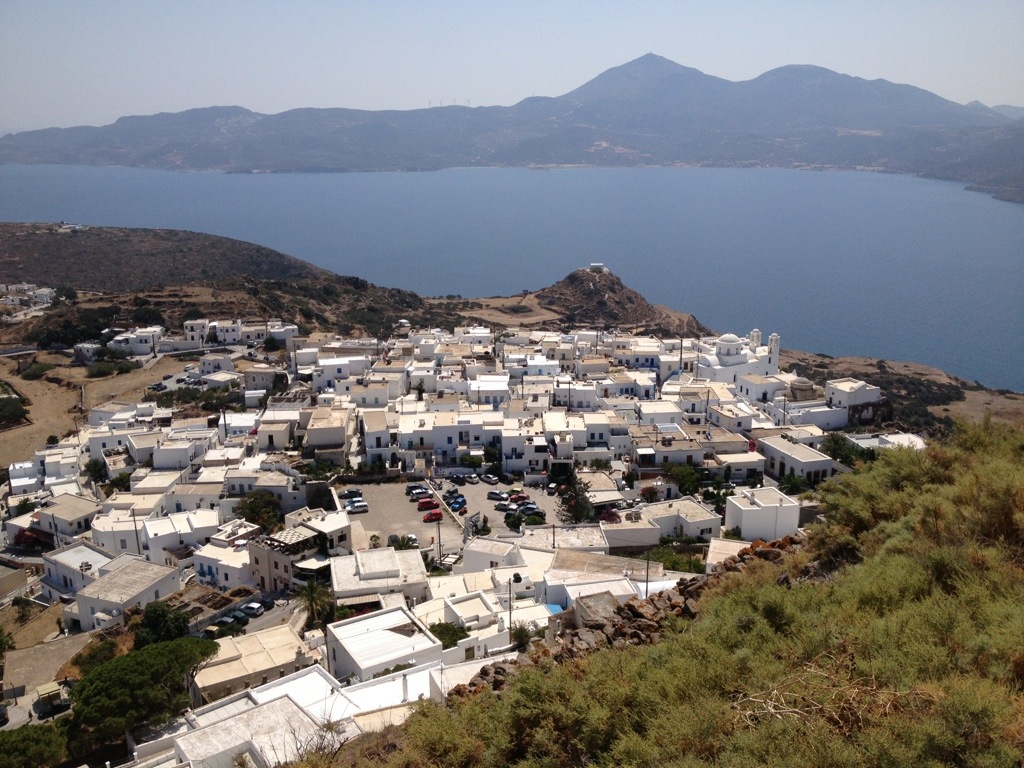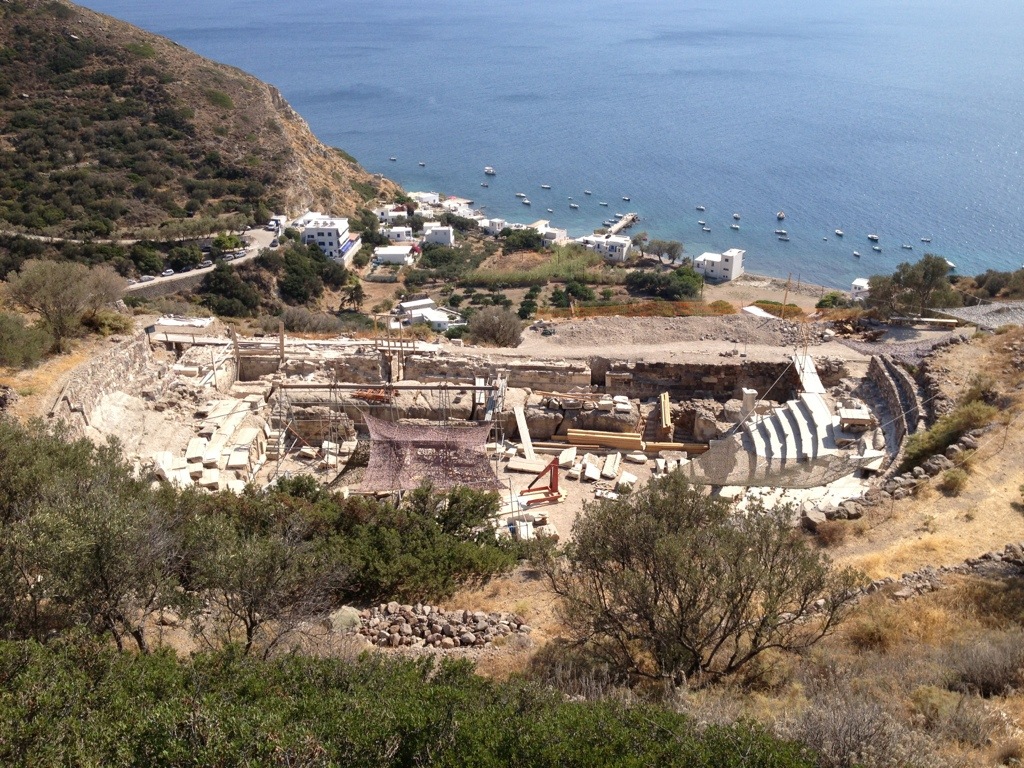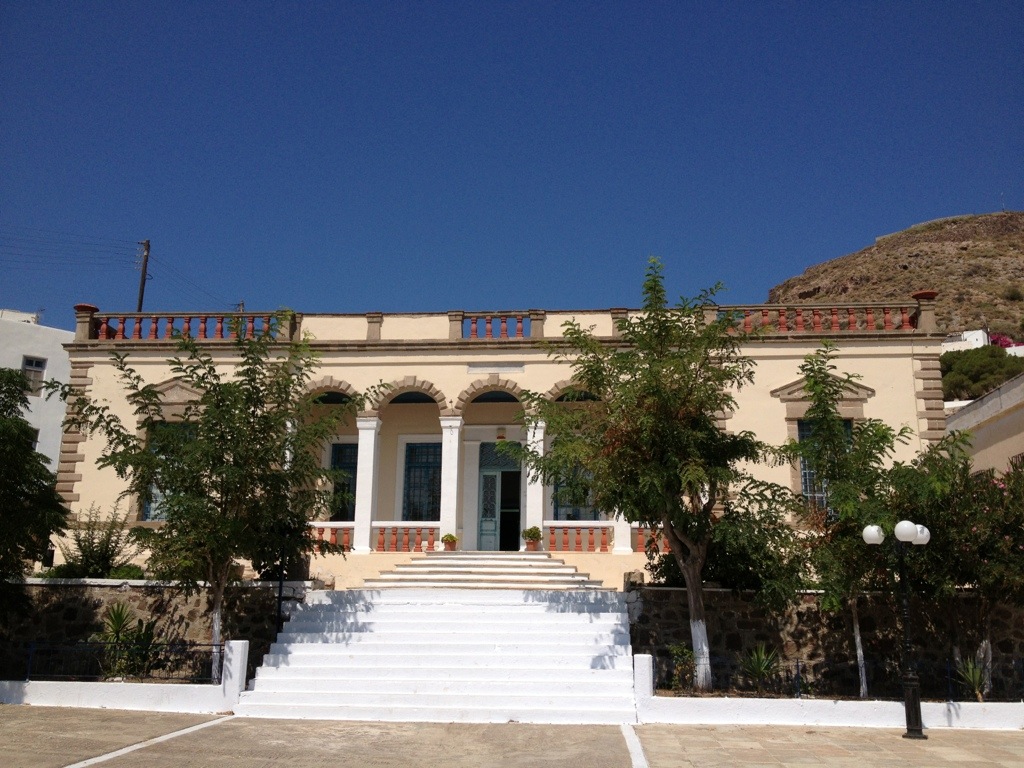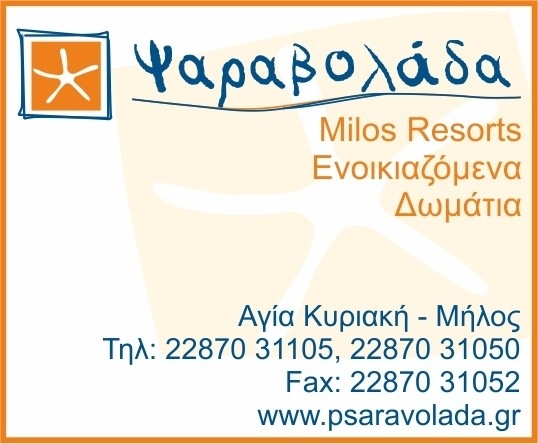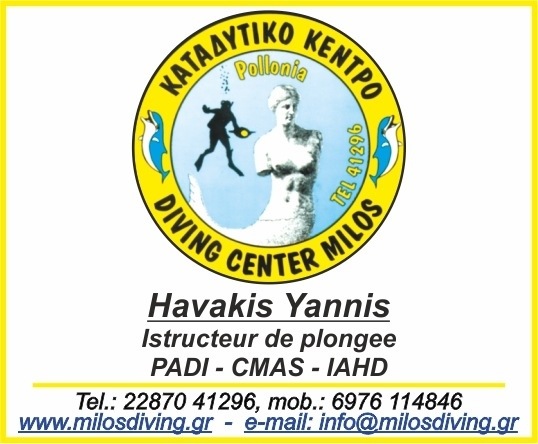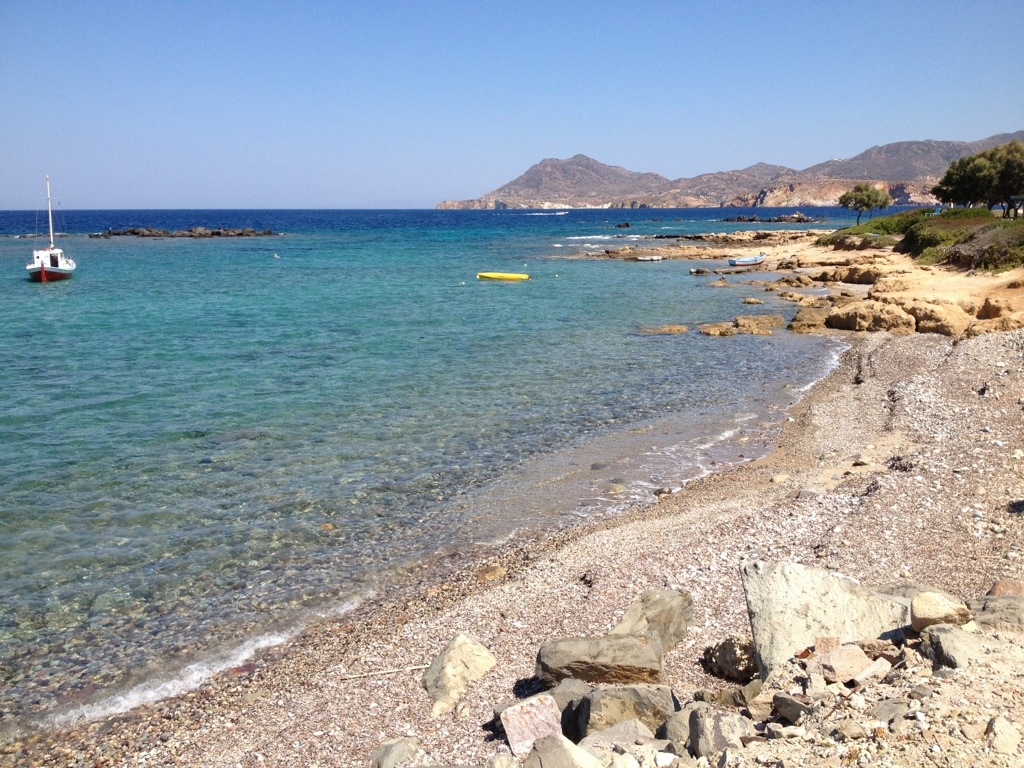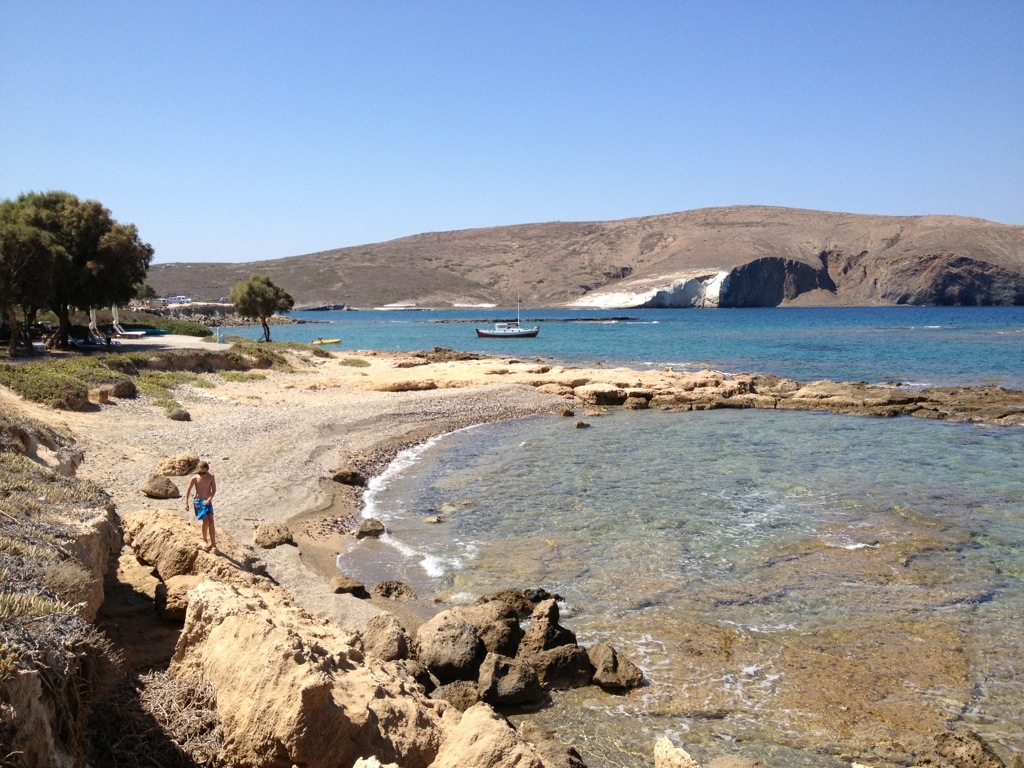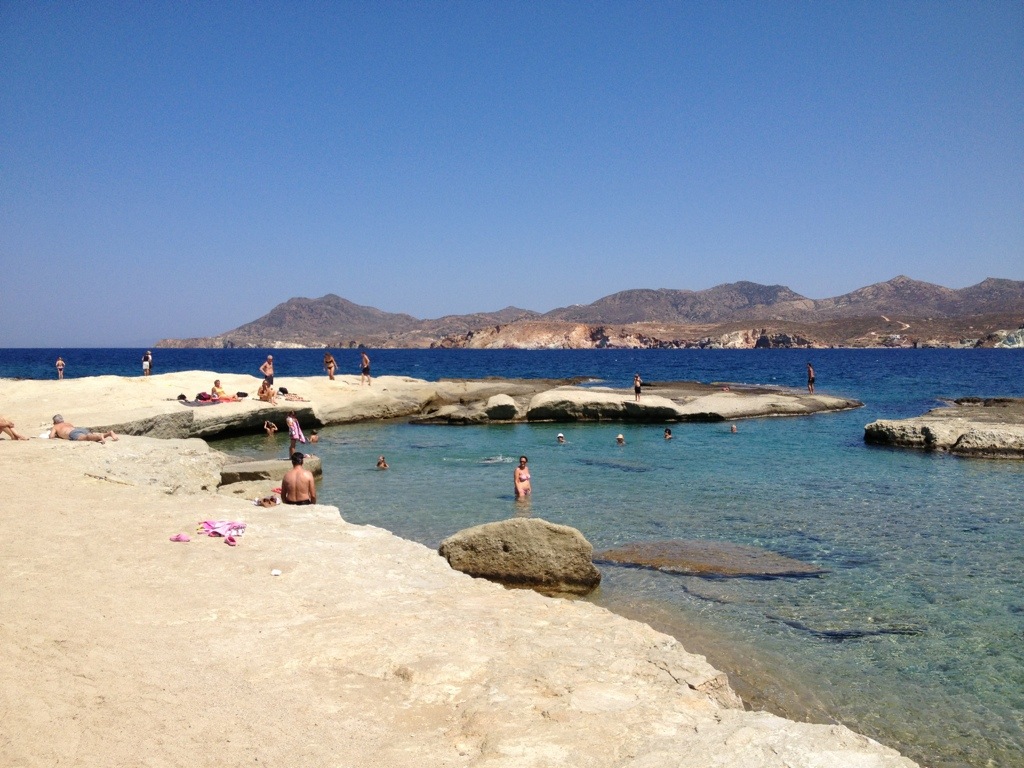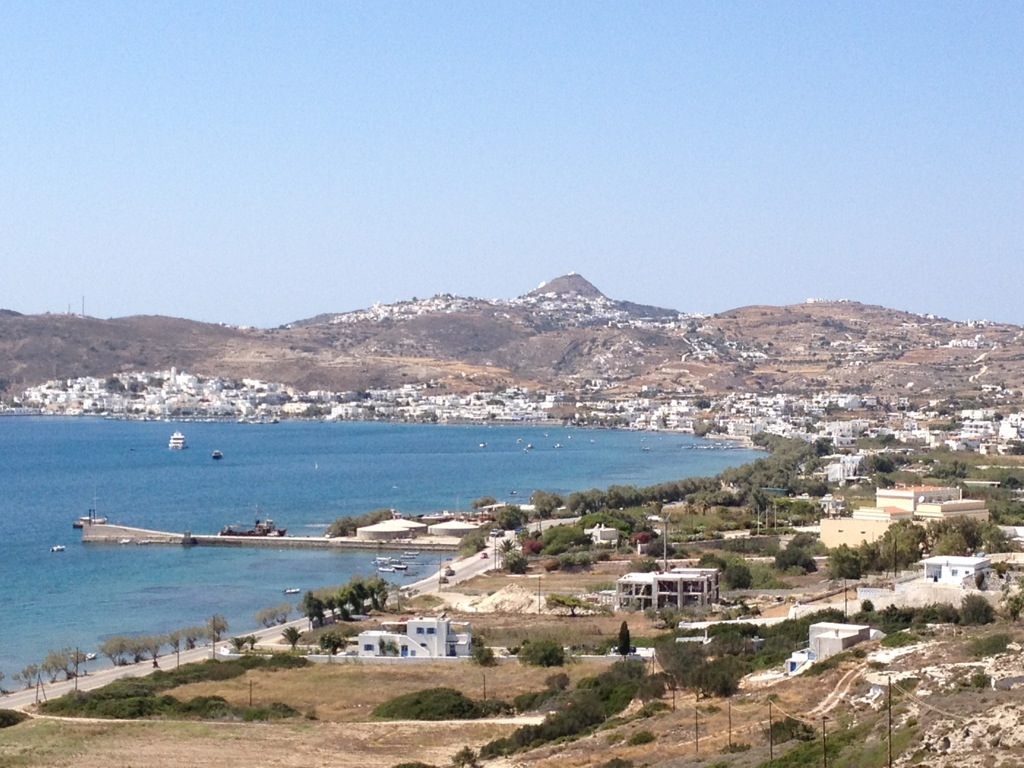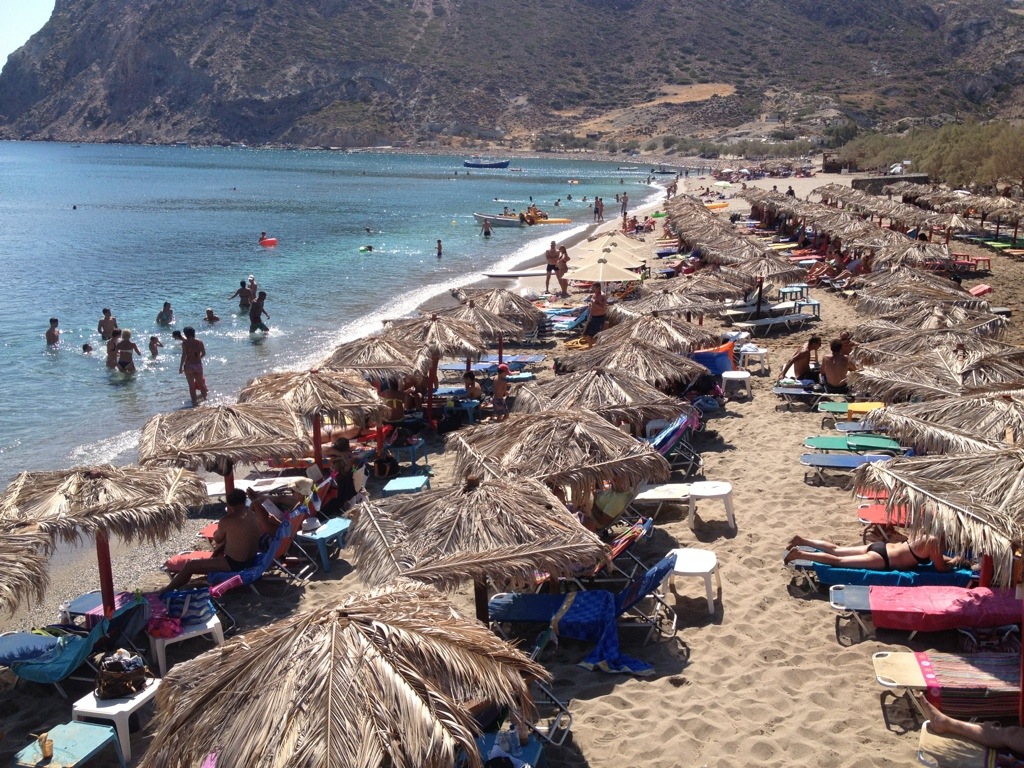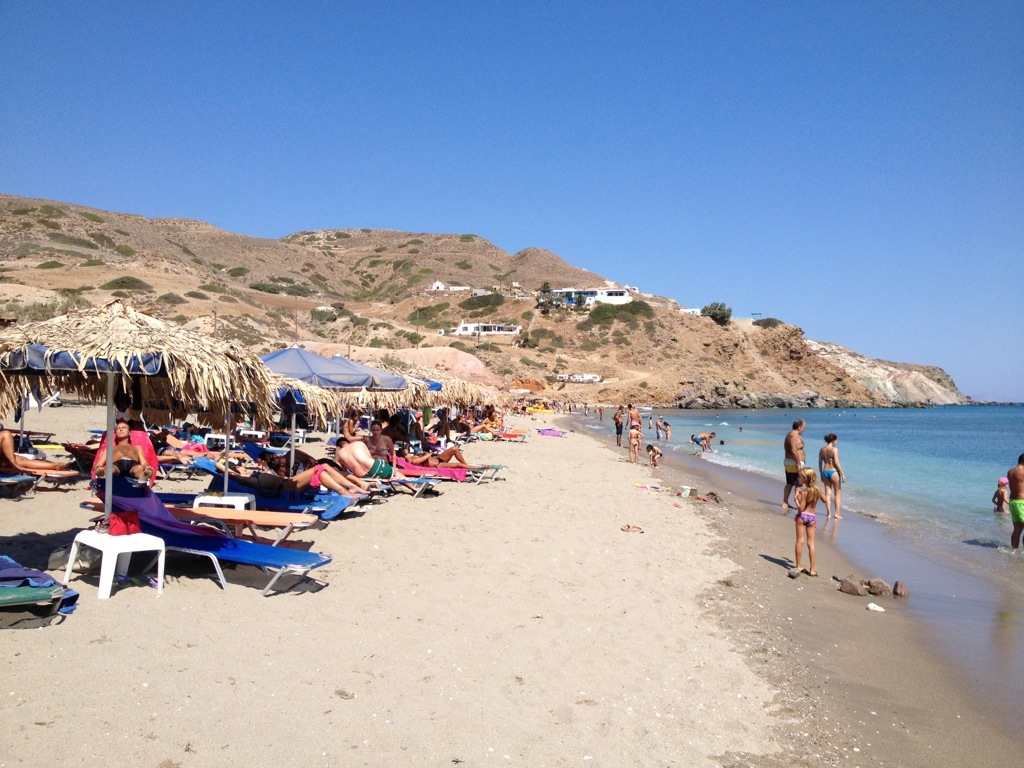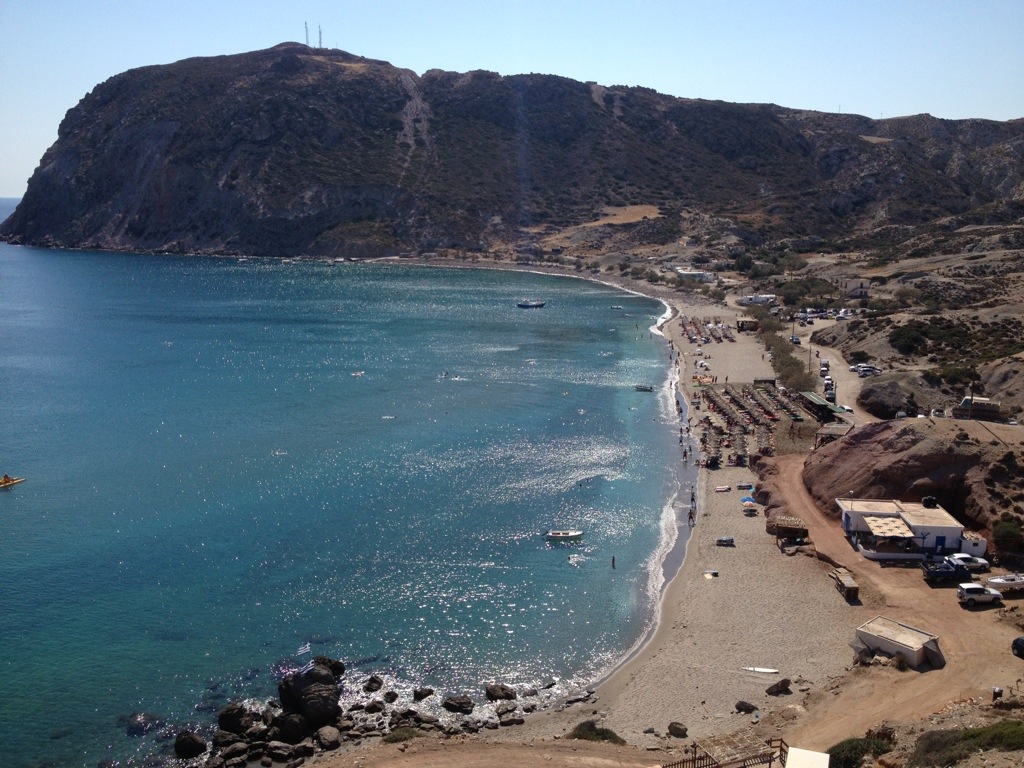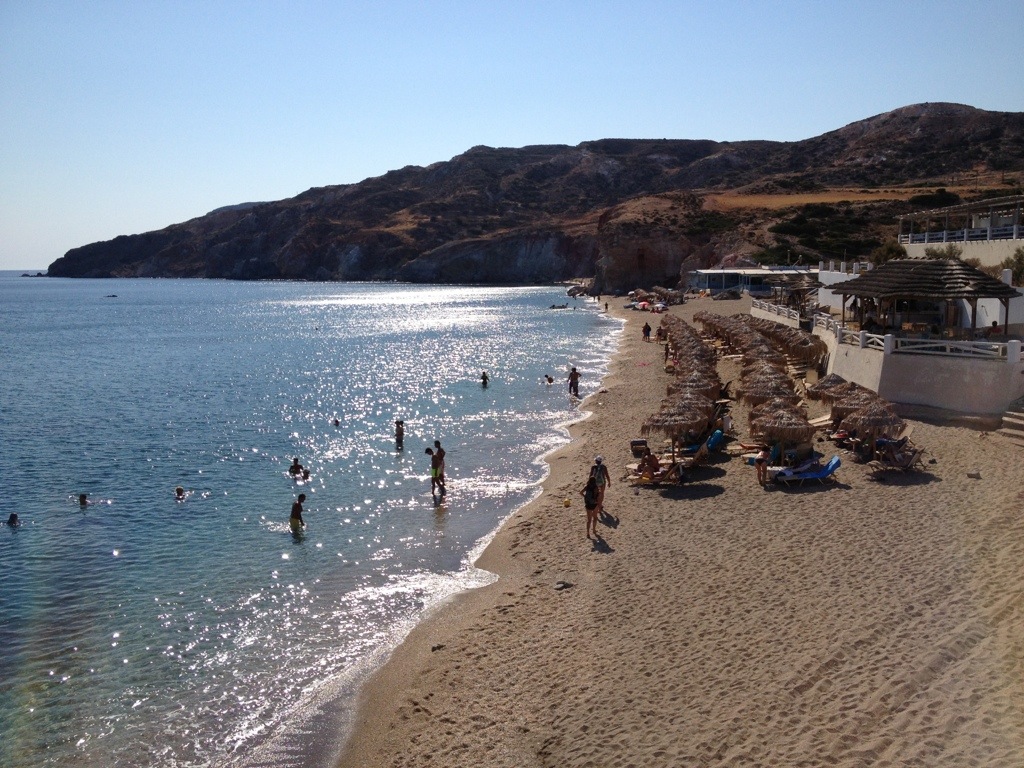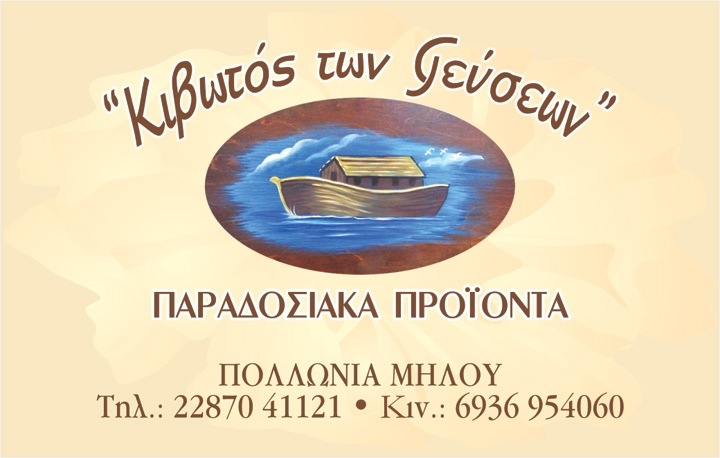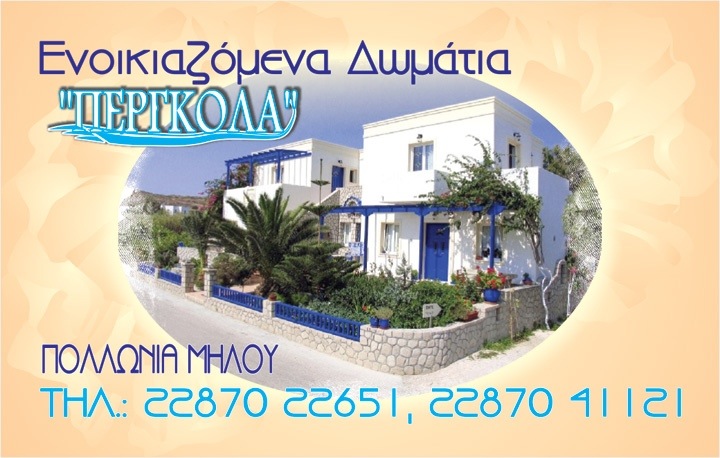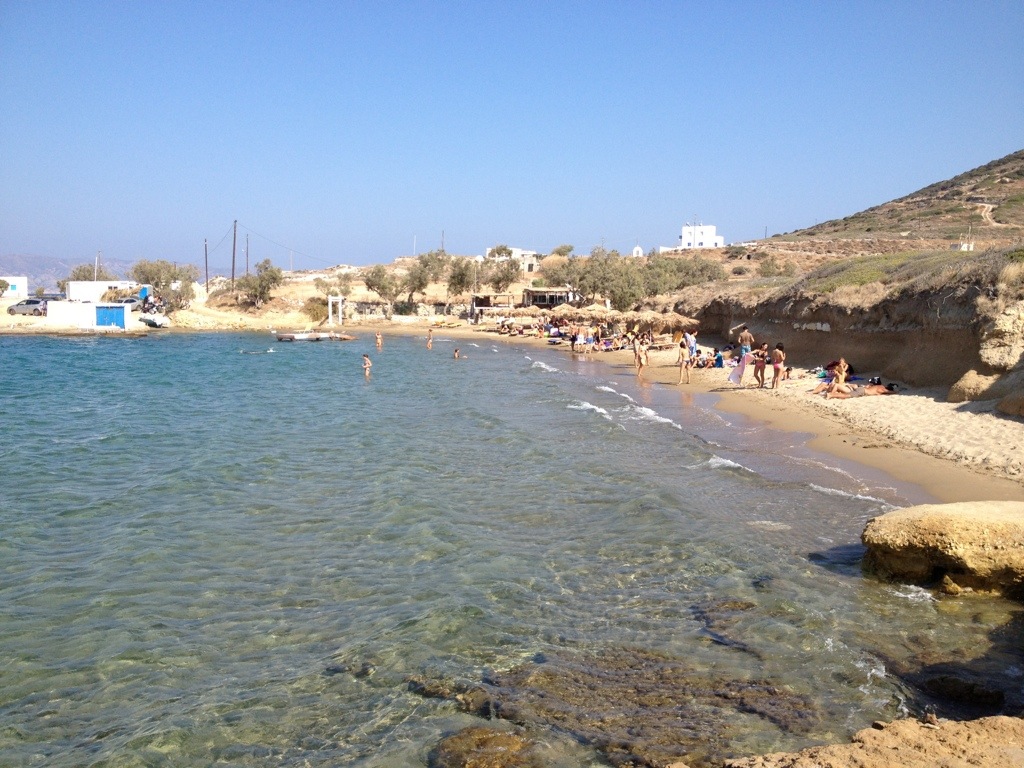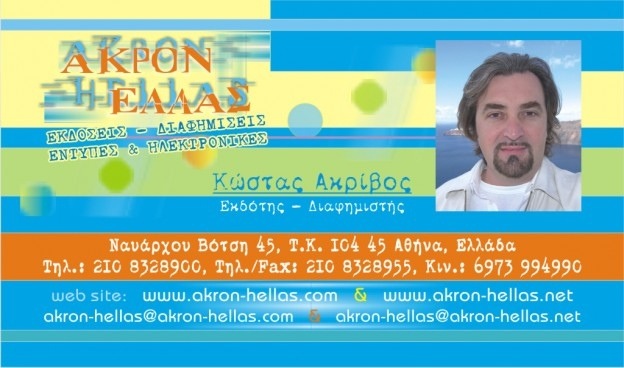Tag Archives: Milos
Glaronnissia Tavern, Tripiti Milos
Glaronissia Catering & Events Service, Tripiti Milos
Giannis Hotel Apartments, Adamas Milos
Finikas Studios, Adamas Milos
En plo Cafe Bar – Plaka Restaurant, Plaka Milos
Corali Hotel, Adamas Milos
Brau Kat Travel, Adamas Milos
Barko Restaurant, Adamas Milos
Aphrodite of Milos Hotel Apartments, Adamas Milos
Marianna Tavern Restaurant, Adamas Milos
Triovasalos, Milos
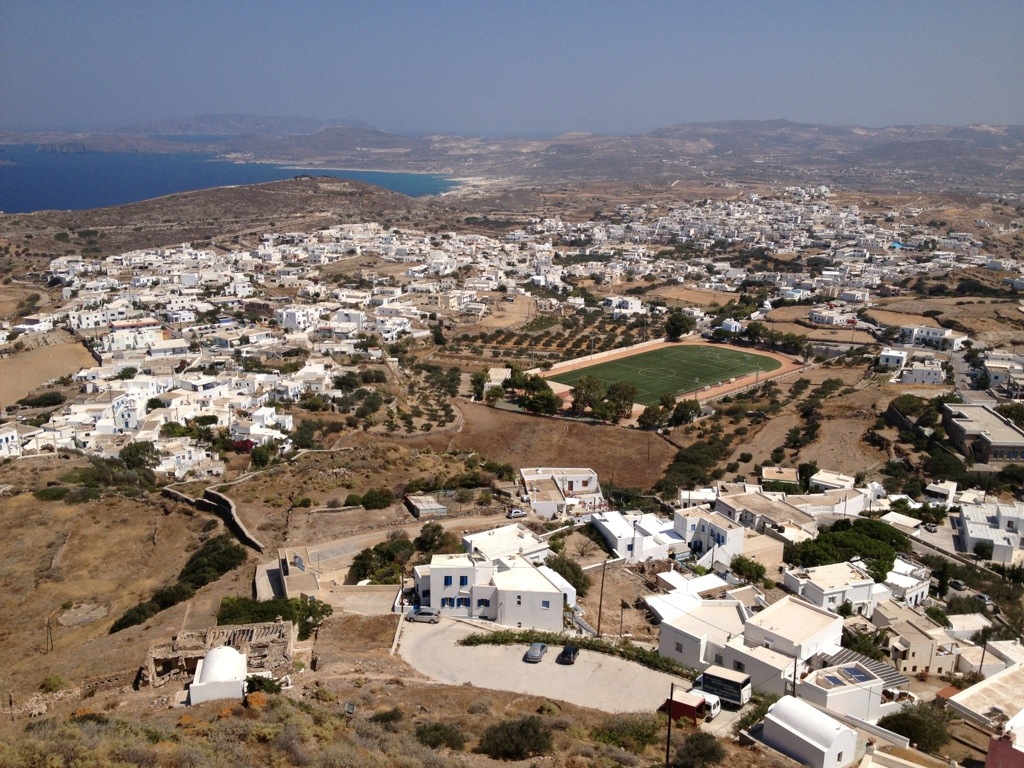 Triovasalos and Pera Triovasalos
Triovasalos and Pera Triovasalos
Setting out from the port and before we reach Plaka, the first villages we find are Triovasalos and Pera Triovasalos.
These two almost continuing villages have been created on two neighboring hills, they are densely populated and amphitheatrically built, whereas they have a considerable commercial activity. In Triovasalos, ‘’Karavodromos’’ constitutes the island’s focal point, where banks, public services, cafeterias and commercial shops are located. Lastly, in Triovasalos and in Pera Triovasalos, you can visit the two significant churches of these villages: the church of Saint Spryindon and the church ofSaint George respectively.
Plakes
Plakes, the small village with the white houses and alleys, is situated between Plaka and Triovasalos. It was built at the foot of the Castle and is name originated from the fact that the region was level (“Plakes” means straightening). Should you go to Plakes, you can visit the island’s church dedicated to Saint Haralabos, where you will see the icon of Panaghia Akradiotissa, one of the island’s oldest icons. Finally, from Plakes you can go easily and quickly to the amazing beach of Plathiena.
Plaka, Milos
Nowadays, Plaka is the island’s capital and it is also one of the most intact capitals of Cyclades.
Its name comes from the level ground upon which the houses of its first inhabitants were built, when the Castle (Kastro) could no longer house the entire population.
Built on a hillock of 220m above sea level, with the use of island colors and according to the Cycladic architecture, with picturesque tiled alleys originally built for the protection against pirates, with small traditional shops, restaurants and cafeterias and with a magical view to the bay of Milos, Plaka composes a scenery of infinite beauty that you must visit and explore. (The circulation of cars is forbidden).
On the hill top of Plaka lies the imposing Venetian “Castle” dated from the 13th century from where you can enjoy idyllic sunsets with beautiful colors and the panoramic view to the island’s bay, as well as to neighboring Cycladic islands. The Assumption of the Virgin or else “Mesa Panaghia” is the church to be found on the top of the Castle, whereas climbing up to the Castle and descending from it, you will find another exquisite church built on a black rock: The Ypapanti of Christ or Panaghia Thalassitra. Moreover, do not miss out to visit ‘’Panaghia Korfiatissa” which is the island’s cathedral from where you can enjoy a dreamy sunset right from its marble yard.
Lastly, in the traditional settlement of Plaka, you will find most of the public services and the two museums that preserve the island’s cultural heritage, meaning its archaeological and folkloreheritage.
Ancient Roman Theatre, Tripiti Milos
The ancient Roman Theatre was originally constructed by the inhabitants of the ancient city of Klima, possibly during the Hellenistic Age (3rd century BC).
However, after the destruction of the city by the Athenians in Roman times, above the preserved foundations of the classic theater, a bigger one was built made of snow-white Parian marble and remarkable bas-reliefs, which it is estimated that it had a seating capacity of 7000 spectators. This is also the shape of the theater you see nowadays.
From the theatre seven marble tiers, six rows of seats, the auditorium , the orchestra, the stage floor and a lot of architecturally elaborate parts are preserved. The excavations began in 1989, and the order for the theatre’s first cleaning was given by Ludwig II, Othon’s father, at L. Ross’s instigation, who along with Othon was the first one to visit the ancient theater in modern times.
Built on prominent spot, on the hillside, the theatre overlooks the port, the view from there is spectacular and its acoustics are very good. So, quite often theatrical performances and music happenings take place there, as in its present shape the theater has a seating capacity of 700 spectators.
Additional Info
- Area:Klima
Archeological Museum, Plaka Milos
The Archaeological Museum of Milos is situated in Plaka and it is housed in a beautiful, neoclassic building by Ernst Ziller.
At the museum the following wonderful collections are exhibited:
A prehistoric collection from Fylakopi
A collection of sculptures and bas-reliefs
An obsidian collection
A collection of inscriptions
A true copy of Aphrodite de Milo rises in the Museum Entrance (Room A), which was made in the workshop of the Louvre Museum. In the left side of the room you can see glass-shown cases with blades, scales and obsidian exfoliates from Fylakopi, Nyhia and Demenegaki. Moreover, in the same room, you can see a large burial jar dated from the 6th century BC.
In the left room (Room B) you can see prehistoric objects dated from the 5th millennium till the end of the 2nd millennium BC. There, you can see glass-shown cases with archaeological findings from ancient Fylakopi, many pots with lilies painted on them , statuettes ,a tufa altar from Fylakopi’s sanctuary, a small collection of marble early Cycladic statuettes and the famous “Kyra of Fylakopi”.
In the small room behind the entrance (Room C) you can admire geometric, archaic, classic, Hellenistic and Roman works, plenty of coins, tools and handy objects.
Closing, reaching the room on the right of the entrance (Room D’), you will see findings from the ancient town of Klima, plenty of sculptures dated form the Hellenistic and Roman period (a Hermaic statue of Marius Trofimos, a tomb bas-relief of a young man with his servant etc.), marble donations and tables of the archaic Melian alphabet (Thanks to the peak the Melians had reached in the historic period, they had developed their own “Melian alphabet” composed of 21 letters).
Additional Info
- Working Hours:8:00 – 15:00, except for Monday
- Entrance Fee:3€ (2€ for visitors over 65 years old, free for students and children under 10 years old)
- Area: Plaka
- Phone:22870 28026
Thomai Xidou Real Estate, Adanas Milos
Psaravolada resorts, Saint (Agia) Kyriaki Beach Milos
Diving Center Milos, Pollonia Milos
Adamas Milos
This modern seaside village is situated inside the bay of the island, which is one of the biggest and safest natural bays of the Mediterranean sea, and it constitutes the largest tourist center of Milos.
Adamantas is its main port and the first view to look upon when approached by ship.
Built on the north side of the bay, Adamantas or ‘’Alamanto” as it used to be called, has been inhabited since 1824. It was built by Cretan refugees expelled from Sfakia, who came to Milos after their failed and bloody revolution against the Turks. Nowadays, the village numbers around 1100 inhabitants.
This seaside island town is composed of small snow-white houses with small yards decorated with flowers and narrow quite lanes which altogether compose a picture of excellent Cycladic beauty. The village of Adamantas throbs with life in summertime. In this village you can combine relaxation and calmness with night life and entertainment, whereas at the same time everything you need for comfortable and pleasant vacations is provided to you: [there are] cafes, restaurants, ouzeries, pizzerias, grill-houses, fast-foods serving souvlaki, a bar, a club, shopping centers, supermarkets, banks, the port authority, the customs, a health center, a pharmacy, a dental clinic, a newsstand for Greek and international press, etc. Here, the island’s night life is intense with bars playing various kinds of music that speed up the rhythms and the entertainment tempo till the very break of dawn.
On the port’s left side you can find the parking lot and then the Lagkada quarter with the Lagkada beach, whereas on the port’s right side the main coastal road stretches out leading to the village’s central square where the bus stop lies, and the taxis await you. On the one side of this coastal road, there is a long tiled pavement, cafeterias, restaurants and tourist shops as well as the municipal Hot Springs of Lakkos, whereas on its left side stand the relatively new port facilities which combined with the safety of the natural port, make Adamantas suitable for yachting activities. (From that point also the trips with boats and touring yachts set out reaching for the inaccessible beaches of the island and also for the tour around Milos and Kimolos).
If you desire to swim, Adamantas can offer that to you, too. Within a short distance and accessible without the use of any means of transportation, lie the beaches of Lagkada (500m from the center of Adamantas) and the beaches of Papikinos (1km away from Adamantas).
Finally, the sights of Adamantas include also : the church of The Assumption of the Virgin, the catholic church of Saint Nikolaos, the Mineral Museum and the Church Museum where the one thousand year old church of The Holy Trinity is housed.
Pelekouda Beach Pollonia Milos
Adamas & Plaka Milos
Saint (Agia) Kiriaki Milos
Paliochori A Beach Milos
Paliochori B Beach Milos
Moto Christos
Kivotos ton Gefsion
Pergola Studios
Polichroni Beach Ya Banaki Pollonia Milos
Akron Hellas net – Blue Guides Milos online
Akron Hellas net – Blue Guides Milos online
Επικοινωνία | CONTACT
Με Εκτίμηση
Εκδότης – Διαφημιστής
ΕΚΔΟΣΕΙΣ – ΔΙΑΦΗΜΙΣΕΙΣ ΕΝΤΥΠΕΣ & ΗΛΕΚΤΡΟΝΙΚΕΣ
Ναυάρχου Βότση 45, Τ.Κ. 104 45 Αθήνα, Ελλάδα
Τηλ.: 2108328900, Τηλ./Fax.: 2108328955, Κιν.: 6973994990
http://www.akron-hellas.net – akron-hellas@akron-hellas.net

